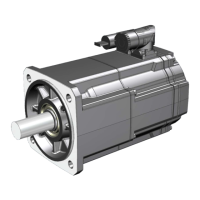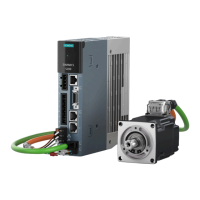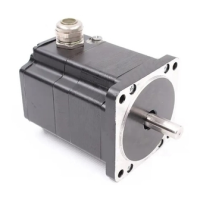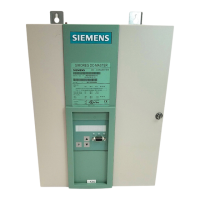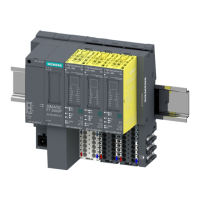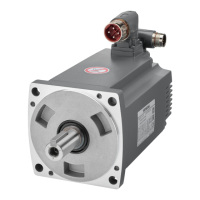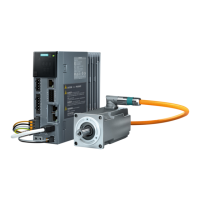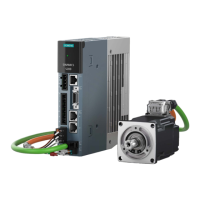Getting Started
76 A5E36037886-003, 04/2017
Benefits of electronic gear (example):
Move the workpiece for 10 mm:
Required number of setpoint pulses:
2500 ppr × 4 × (10 mm/6 mm) = 16666
Required number of setpoint pulses:
(10 mm × 1000) / 1 LU = 10000
The electronic gear ratio is a multiplier factor to pulse train setpoint. It is realized with a numerator and a denominator. Four
numerators (p29012[0], p29012[1], p29012[2]. p29012[3]) and one denominator (p29013) are used for the four electronic
gear ratios:
The first numerator of electronic gear
The second numerator of electronic gear
The third numerator of electronic gear
The forth numerator of electronic gear
The denominator of electronic gear
These four electronic gear ratios can be selected with the combination of the digital input signals EGEAR1 and EGEAR2:
Note
After a gear ratio is switched to another one via digital inpu
ts, you need to wait five seconds and then perform
Note
The range of electronic gear ratio is from 0.02 to 500.
The electronic gear ratio can be set at SERVO OFF
state only. After the setting, you need to reference the drive again.
Examples for calculating the electronic gear ratio
1 Identify mechanism
• Pitch of ball screw: 6 mm
•
Deduction gear ratio: 1:1
Deduction gear ratio: 1:3
2 Identify encoder resolu-
